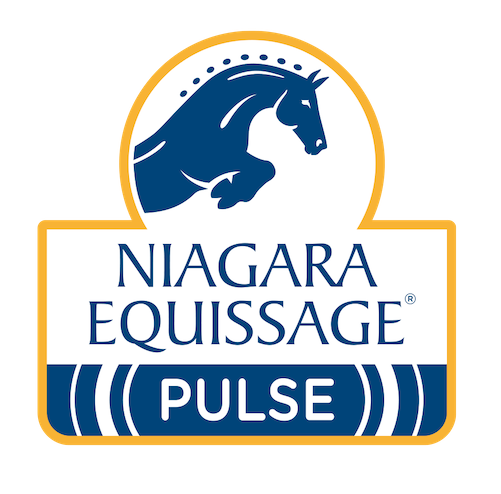Horse Sore Back
A sore back in a horse can be caused by numerous factors including;
- Deformities of the vertebral column
- Soft tissue injuries
- Fractures
- Muscle and nerve problems
- Other vertebral and articular lesions
Symptoms of horse sore back
- Dipping
- Flinching or raising the back muscles when pressure is applied
- Stiffness on one rein when being ridden
- Tail carried to one side
- Poor or reduced performance
- Gait abnormalities
- Uneven muscle tone
- Reluctance to jump and engage hind quarters.
Can Niagara Equissage help with horse sore back?
Yes, definitely.
Using Niagara Equissage can do nothing but good in terms of back related issues whatever the cause. Even where the cause is established as being a deformity, then any therapy which eases, relaxes and tones helps the horse more ably cope. For example in the case of Kissing Spine whether or not surgery has been carried out, the ultimate success of treatment is reliant upon how strong the back muscles are.
In the case of muscular spasms, depending upon its location and if it is detected very early on, then specific, targeted treatment with the Niagara Equissage Hand Unit should be enough to restore the status quo. However, if this does not resolve the situation within 2/3 days, then treatment should be sought from a practitioner, following veterinary advice.
For the spasm that is more deep set, it has to be dissipated by an appropriate practitioner so that healing can take place and muscle regenerated. Once the practitioner has done their job, Niagara Equissage can take over and put everything else back in place.
Thereafter Niagara Equissage can be used to aid the full recovery process by promoting good circulation and continued elimination of toxins. The deep massaging helps to ensure that the muscle fibres remain in their unknotted state as affected by the practitioner ready for a return to exercise. The elevation in bodily temperature that occurs following a 20 minute session remains for several hours, therefore capillaries remain more dilated so therapy is effectively continuing long after Equissage has been removed.
Similarly if the cause proves to be a trapped nerve, then a chiropractor will be required to attend to the consequent subluxation(s). After treatment Niagara Equissage will help restore proper blood flow and revitalise the nerve or nerves that have been trapped. By using Niagara Equissage alone a subluxation cannot be corrected; symptoms may be temporarily eased but the cause will still be there. In instances where nerves such as the sciatic nerve are involved, as with people, this is very painful so a horse probably will not be very happy if an Equissage is applied, sending vibrations along the nerve pathways; wait until a practitioner has treated the horse, then let Niagara Equissage take over.
General sore back can readily be a result of particularly strenuous work or the addition of new exercises into the working programme. Niagara Equissage is well-known for its abilities with regard to easing tension and relaxing tightness in muscles all over the body, not just the back.
Application
For general horse sore back, use the Back Pad on a No.2-3 setting for 20-30 minutes a day after exercise. Additional use of the Hand Unit around the main sore spot will provide extra relief and well as more targeted therapy.
If a horse is prone to tightness, etc. then use Niagara Equissage prior to exercise for 20 minutes on a No.3-No.4 setting for 10 minutes, turned up to a higher setting (up to No.8) for 10 minutes.
Following therapy from a practitioner, then take their specific advice depending upon exactly what treatment has been effected. As a general guide, bearing in mind that a horse can feel a bit sore after such treatment, then a more gentle massage will be welcome. A 20-30 minute session with the Back Pad set on No.2-No.3 will be of most benefit to aid restorative healing.
If a horse is particularly prone to a sore back then additional targeted use of the Hand Unit is acceptable. Gently apply the Hand Unit along the length of the spine, both directly on the nerve channel and also a couple of inches below the spine (on either side of the back) on a medium to high setting.

Testimonials
See All- “We use the Niagara Equissage a lot. The horses really like it and it helps to loosen them up before we ride and show.”
- “We us the Niagara Equissage on our horses everyday, whether at home or at a show. It really helps to loosen up our stiff horses and relax their muscles before training and competition. We love it.”
- International 3 Day Event Rider
Brandes Formula and AfterAce are incredibly useful and have shown fantastic results. The Brandes Formula gives my horses a real tonic and a huge boost when needed. They are able to cope with competition stresses and long distance traveling much better. The AfterAce has shown great improvement with soundness and joint conditions. I can see a real difference and all my top horses are on it.

